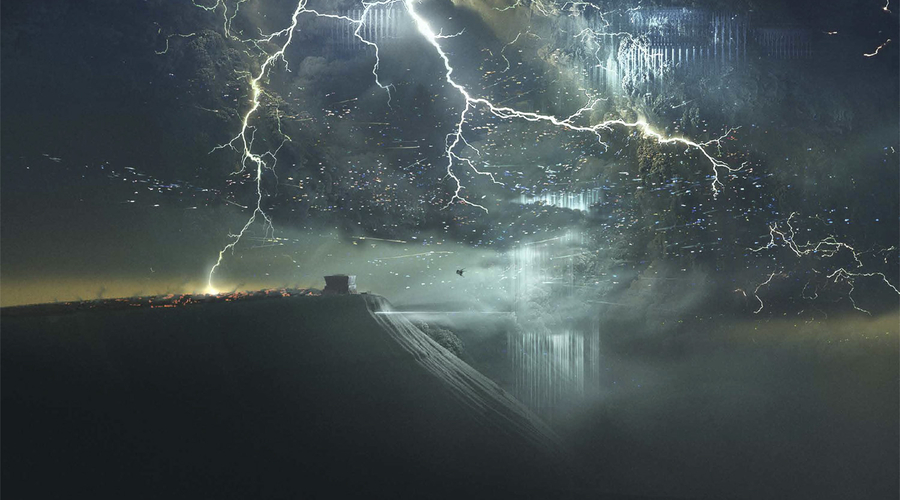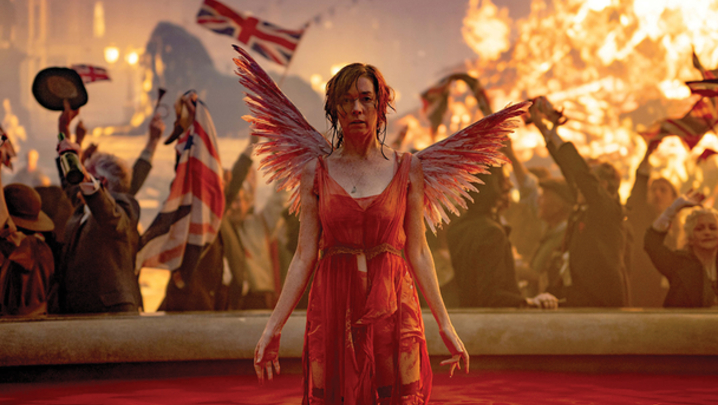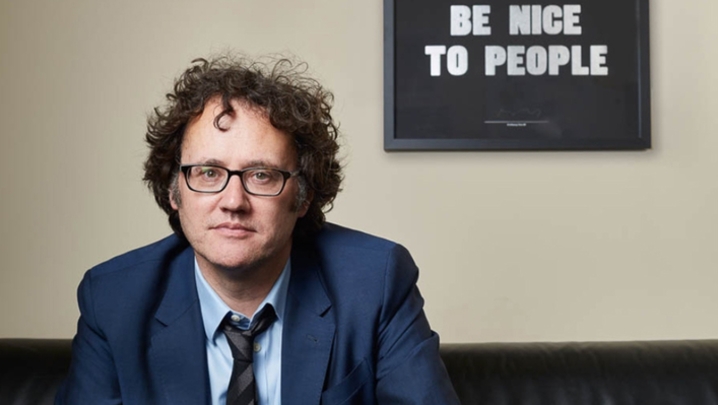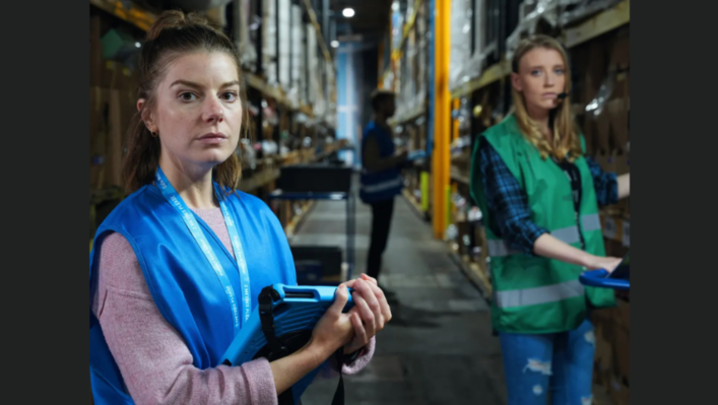An RTS Futures event revealed how the Welsh indie rose to the challenge of adapting His Dark Materials.
Fans of His Dark Materials have been going cold turkey since Philip Pullman’s fantasy drama ended its third and apparently final series on BBC One in February. But, according to executive producer Jane Tranter, who was speaking at a sold-out RTS Futures event last month, further helpings could be served up.
“We’ve talked openly about the fact that we really want to do that – Philip is busy writing the third book in The Book of Dust series, which will finish the next section… of Lyra’s story,” said Tranter, the founder of Bad Wolf, which makes His Dark Materials for the BBC in the UK and HBO in the US. “We have to wait for him to finish that, and then we have to talk to the BBC and HBO, or anyone else, and see if they’ll let us do it.”
Earlier on in the evening, some of the drama’s key figures discussed how they brought His Dark Materials to the screen. Dafne Keen, who plays Lyra, the heroine of Pullman’s books, was unable to attend because of her commitments on the new Star Wars series, The Acolyte.
Tranter identified “two critical decisions”: the first was hiring writer Jack Thorne to write series one. “He was passionate about it, knew what he was talking about and had a brilliant take.” The second was “getting Dan McCulloch on board, who then got everyone else of any importance to join”.
McCulloch, one of many executive producers working on the series, said the key decision was to shoot His Dark Materials, as far as possible, on built sets in a studio, Bad Wolf Studios in Cardiff, rather than on location. “We wanted to make it like something that you might make in the UK in the 1940s, where you create a studio aesthetic.”
He recalled: “When you’re casting a 12-year-old [Keen], then it’s much better for her to be educated in a school here as well.”
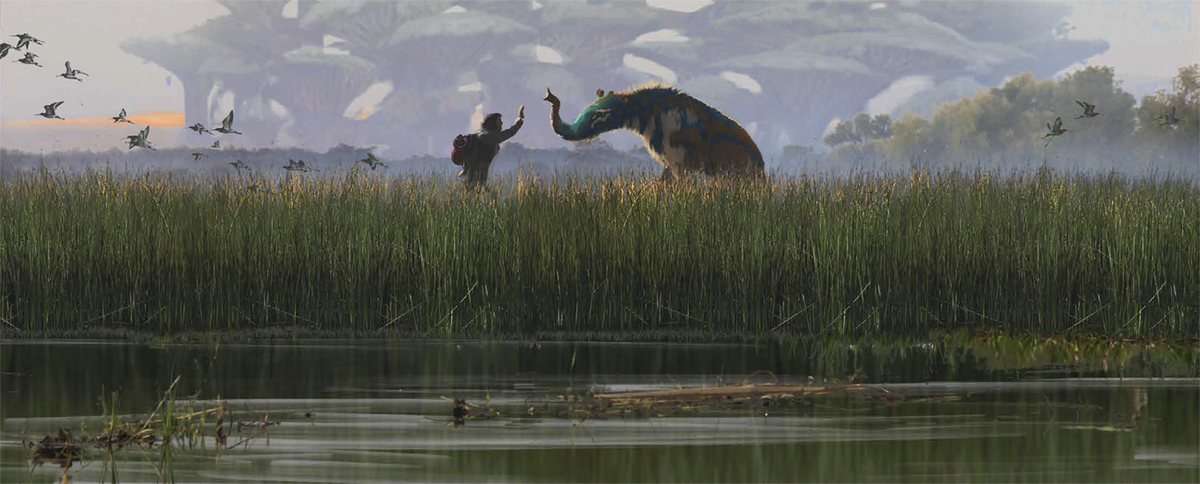
Spanish-British actor Keen was one of the first girls to audition for the part of Lyra. “She just had this attitude and it felt like she was interviewing us, as much as we were interviewing her,” said McCulloch. “It turned out that she was extraordinarily nervous.”
Writer and executive producer Francesca Gardiner, who joined the team for the second and third series, had been a fan of the Pullman trilogy since her teenage years. “I always approach [adapting] with trepidation, particularly when you are dealing with such an incredibly beloved text.… It was a dream to be involved,” she said.
An adaptor, she explained, cannot be “too precious with the words on a page.… It’s a very different medium, television – it’s so much more literal than literature. You have to find ways of staying true to the integrity of the creative vision while also allowing a certain amount of fluidity.
“That challenge only becomes more intense as you [progress] from book to book, because the decisions that you’ve made and the directions that you have taken in your TV show, then have knock-on effects.”
Adapting Pullman throws up its own challenges – “particularly with the last book”, she said. “It’s so operatic in its scale; it’s full of metaphor and archetype and so you have to figure out how to infuse the characters with the real human life that they need and the actors so brilliantly bring.”
Production designer (and another of the show’s executive producers) Joel Collins explained that filming environments were “as real as we could make them throughout the show”, which meant “being in the studio and controlling the set”. Green screen could therefore be used sparingly – so, when it was used, there was sufficient budget to make the visual effects “world class”.
Representing Pullman’s “daemons” – human souls in animal form who accompany the characters in His Dark Materials – on- screen was a crucial challenge for the production. The solution was to use a variety of puppets (which the actors found much more appealing to perform with than the traditional tennis ball on a stick). During post-production, animators then painted out the puppeteers and puppets and added the daemons.
“Actually, we did investigate using real animals at one point – that would have been a disaster,” said McCulloch. Tranter agreed: “The problem with animals is that they behave like animals, not daemons, so it just doesn’t work.”
Senior VFX supervisor Russell Dodgson explained how he created the brutal fight between two polar bears, Iorek and Iofur, in series one: “When you make anything using visual effects techniques, I believe you use as wide a range of things as possible…. I really don’t get stuck into the technical aspect of it because that’s when you stifle creativity.
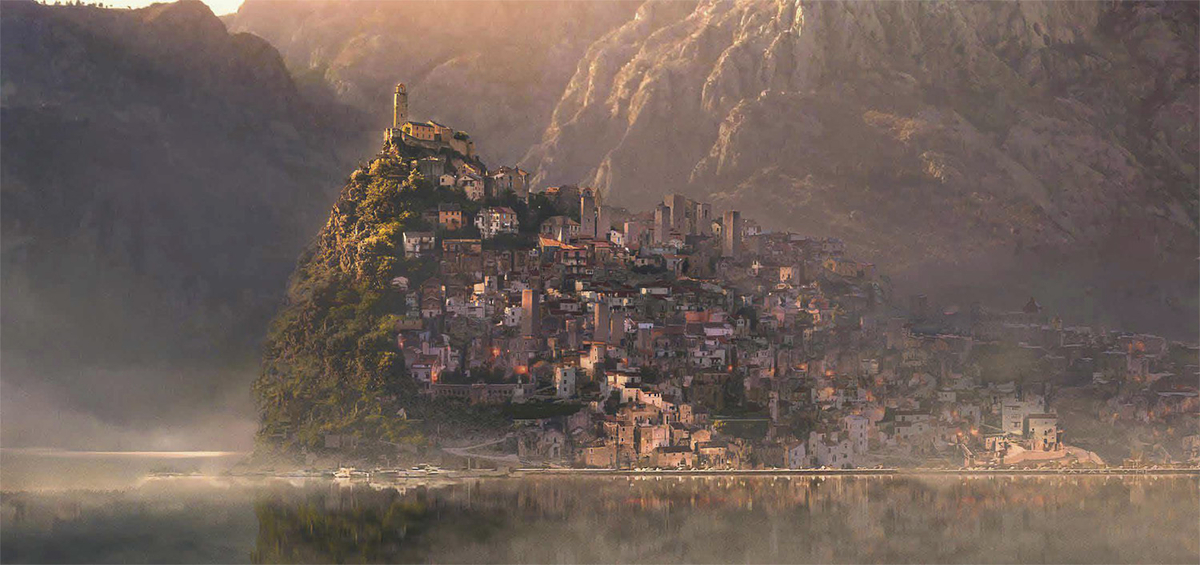
“My first instinct was, ‘Let’s just let two dudes wrestle’, and then work out the set-up of the fight and the beats of it… it’s all about speed, especially in television. So, in the end, the two dudes turned out to be me and a stuntman… and there’s nothing more arresting than realising that you’re so out of shape.
“We roughed that out physically [so that] I had an idea of the choreography and what [bears] could do.” It was then over to the animators to create the polar bears.”
McCulloch said: “Ultimately, we were trying to find a natural kind of feel to [the scene].” Collins added: “We did have a moment early on where we tried to anthropomorphise the animals a bit, just to try it out. What would it look like… if we made the bear a bit more human? And it failed.”
“It was a terrible idea,” agreed Tranter.
Were there any ideas that the books’ author, Phillip Pullman, disapproved of? Only one, apparently. In series three, for practical reasons, a decision had been made to do away with the seed-pod wheels that the mulefa creatures use to move. Pullman, though, was insistent, telling McCulloch, recalled the exec, that “they have to ride on wheels – it’s about their symbiotic relationship with the environment”.
Looking back over the past five years, Tranter admitted, “It’s one of those classic things that, if you knew then what you know now, you probably would have fucked it up right royally.”
Clearly, looking at the favourable critical response and strong audiences, she and her production team didn’t.
Report by Matthew Bell. The RTS Futures event ‘Anatomy of a hit: His Dark Materials’ was held at the British Museum on 7 March. It was hosted by Rebecca Cooney, insights editor at Broadcast magazine, and produced by Bad Wolf.

